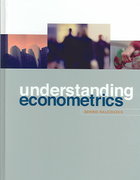Question
1)Hakima Manufacturing Company produces connecting rods for 3- and 5-cylinder automobile engines using the same production line. The cost required to set up the production
1)Hakima Manufacturing Company produces connecting rods for 3- and 5-cylinder automobile engines using the same production line. The cost required to set up the production line to produce the 3-cylinder connecting rods is $2500, and the cost required to set up the production line for the 5-cylinder connecting rods is $3000. Manufacturing costs are $10 for each 3-cylinder connecting rod and $15 for each 5-cylinder connecting rod. Hawkins makes a decision at the end of each week as to which product will be manufactured the following week. If there is a production changeover from one week to the next, the weekend is used to reconfigure the production line. Once the line has been set up, the weekly production capacities are 5000 5-cylinder connecting rods and 9000 3-cylinder connecting rods. Let
x3represent the number of 3-cylinder connecting rods produced next week
x5represent the number of 5-cylinder connecting rods produced next week
s3= 1 if the production line is set up for the 3-cylinder connecting rods; 0 if otherwise
s5= 1 if the production line is set up for the 5-cylinder connecting rods; 0 if otherwise
a)Using the decision variables x3and s3, writea constraint that limits next week's production of the 3-cylinder connecting rods to either 0 or 9000 units.
b)Using the decision variables x5and s5, writea constraint that limits next week's production of the 5-cylinder connecting rods to either 0 or 5000 units.
c)Write three constraints that, taken together, limit the production of connecting rods for next week.
d)Writean objective function for minimizing the cost of production for next week.
2)Martha Manufacturing makes three products. Each product requires manufacturing operations in three departments: A, B, and C. The labor-hour requirements, by department, are as follows:
Department Product 1 Product 2 Product 3
A 2.00 1.5 3.00
B 2.50 2.00 1.00
C 0.25 0.25 0.25
During the next production period, the labor-hours available are 450 in department A, 350 in department B, and 50 in department C. The profit contributions per unit are $25 for product1, $28 for product 2, and $30 for product 3.
a)Formulate a linear programming model for maximizing total profit contribution.
b)Solve the linear program formulated in part (a). How much of each product should be produced, and what is the projected total profit contribution?
c)After evaluating the solution obtained in part (b), one of the production supervisors noted that production setup costs had not been taken into account. She noted that setup costs are $400 for product 1, $550 for product 2, and $600 for product 3. If the solution developed in part (b) is to be used, what is the total profit contribution after taking into account the setup costs?
d)Management realized that the optimal product mix, taking setup costs into account, might be different from the one recommended in part (b). Formulate a mixed-integer linear program that takes setup costs into account. Management also stated that we should not consider making more than 175 units of product 1, 150 units of product 2, or 140 units of product 3.
e)Solve the mixed-integer linear program formulated in part (d). How much of each product should be produced, and what is the projected total profit contribution? Compare this profit contribution to that obtained in part (c).
Step by Step Solution
There are 3 Steps involved in it
Step: 1

Get Instant Access to Expert-Tailored Solutions
See step-by-step solutions with expert insights and AI powered tools for academic success
Step: 2

Step: 3

Ace Your Homework with AI
Get the answers you need in no time with our AI-driven, step-by-step assistance
Get Started


